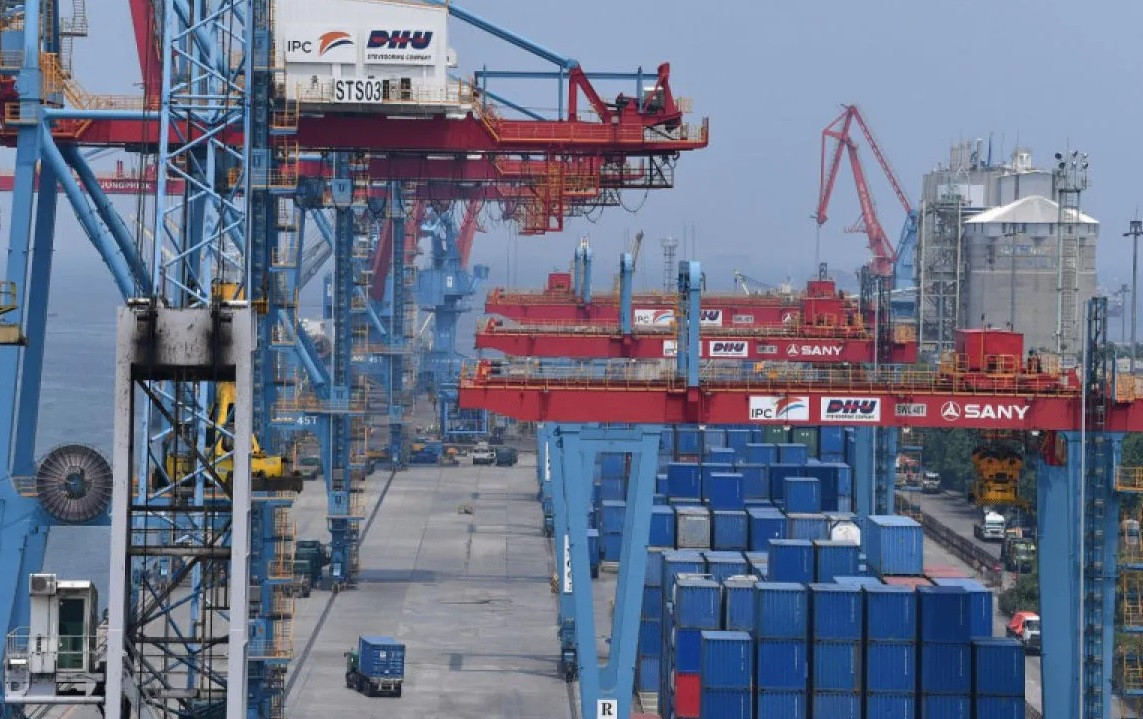Popular Reads
Top Results
Can't find what you're looking for?
View all search resultsPopular Reads
Top Results
Can't find what you're looking for?
View all search resultsIndonesia's economic outlook and risks in 2024
The World Bank projects robust growth for Indonesia next year, dipping slightly to 4.9 percent in 2024-2026 in a trend toward normalization following post-COVID recovery.
Change text size
Gift Premium Articles
to Anyone
I
ndonesia is projected to post robust growth throughout the outlook period, though easing a little as the commodity boom loses steam: The economy is projected to grow 5 percent in 2023 before easing slightly to an average of 4.9 percent in 2024-2026, reflecting softer terms of trade and a normalization toward trend growth.
Private consumption will be the primary driver of growth, supported in 2024 by election-cycle spending. Public consumption growth will account for a planned civil servant salary raise in 2024 and will continue to be supported in subsequent years as the new administration’s programs get underway.
Investment is expected to pick up pace over the outlook period on the back of earlier reforms and new government projects. Exports and imports are expected to grow only modestly, as volumes are already elevated following very strong growth in 2021-2022.
Inflation is projected to decline further and remain within the revised target band of Bank Indonesia (BI). Headline inflation is projected to average 3.7 percent in 2023 and ease further to 3.2 percent in 2024. This remains well within BI’s inflation target band, which is being revised from 3.0 percent plus/minus 1 percent to 2.5 percent plus/minus 1 percent in 2024. Correspondingly, inflation expectations are expected to remain anchored within this range.
Falling inflation reflects the broader softening in commodity prices and normalizing domestic demand, notwithstanding some continued upside pressure on food prices due to El Niño effects. Moreover, with the output gap estimated to close in 2024, the authorities remain committed to keeping inflation within their target range. Looking ahead, inflation is projected to average 3.0 percent during 2025-2026.
The external position is expected to become more challenging due to slowing trade and global financing pressures. Services exports will benefit from a continued recovery in tourism. The current account is expected to record a small deficit in 2023, and gradually expand to minus 1.4 percent of gross domestic product (GDP) by 2026 as lower commodity prices and weaker global growth hamper exports.
Foreign direct investment will remain the largest source of external financing as competitiveness reforms yield results and recent industrial downstreaming efforts attract new projects.
BI’s monetary stance will continue to be geared toward guarding against rapid or excessive capital outflows, though it will have lesser leeway with the tighter revised inflation targets. Consequently, foreign currency reserves are projected to remain adequate and above six months of imports.
The fiscal stance is expected to remain conservative, with additional spending financed by revenue gains. The fiscal deficit is projected to average 2.3 percent in 2024-2026.
Total revenues-to-GDP will slowly pick up as the effects of tax reforms materialize, despite remaining below pre-pandemic levels (averaging 12.6 percent of GDP in 2024-2026). Nontax revenues are expected to ease in line with lower commodity prices. At the same time, spending is expected to remain tight but gradually return to pre-pandemic levels, averaging 14.8 percent of GDP for 2024-2026.
The subsidies bill is forecast to continue decreasing as assistance shifts toward more targeted social spending. Public investment, including investment finance, is expected to pick up after the election year with the new administration likely pushing to make a mark through infrastructure projects.
Gross fiscal financing needs will decline at an average 4.5 percent of GDP yearly. They are expected to be broadly met through the domestic market, but at a rising cost. Given global prospects of higher-for-longer borrowing costs, interest payments are therefore forecast to rise on average by 6.0 percent yearly between 2024 and 2026, accounting for 13.4 percent of the total expenditures.
The outlook is subject to several, mostly external, downside risks. Higher-for-longer interest rates could weigh on global demand, elevate borrowing costs and tighten access to external financing. Deteriorating global conditions, including geopolitical uncertainty and climate change-related shocks, could disrupt global value chains and induce a sharper decline in the terms of trade, resulting possibly in lower revenues and a tighter fiscal position for Indonesia.
A hard landing of the United States economy at the end of its current monetary tightening cycle would likewise dampen commodity prices, but could also see capital flows swing back to emerging markets.
A reinvigorated Chinese economy could temper recent trends in global supply chain diversification and sap the momentum from the recent manufacturing resurgence in Indonesia. Domestically, with a change in administration in 2024, there is a risk of losing momentum in the implementation of competitiveness-boosting structural reforms, which can impact growth.
With resilient macroeconomic underpinnings and the end of the post-COVID recovery cycle, the policy focus turns again to the growth agenda. Indonesia has a credible policy track record of navigating downside risks and maintaining macroeconomic stability. The country’s small twin deficits, low public debt, adequate foreign exchange reserves, stable external financing and steady growth performance constitute robust macroeconomic buffers for responding to shocks.
In the future, the challenge is to build on these strong macroeconomic fundamentals to deliver faster, greener and more inclusive economic growth. A core pillar of such a growth agenda is reforms that address structural bottlenecks in the economy that limit efficiency, competitiveness and productivity growth.
This will be essential if Indonesia is to have a chance at achieving its vision of becoming a high-income country by 2045.
***
This article is excerpted from the World Bank “Indonesian Economic Prospects” report issued in Jakarta on Dec. 12.











